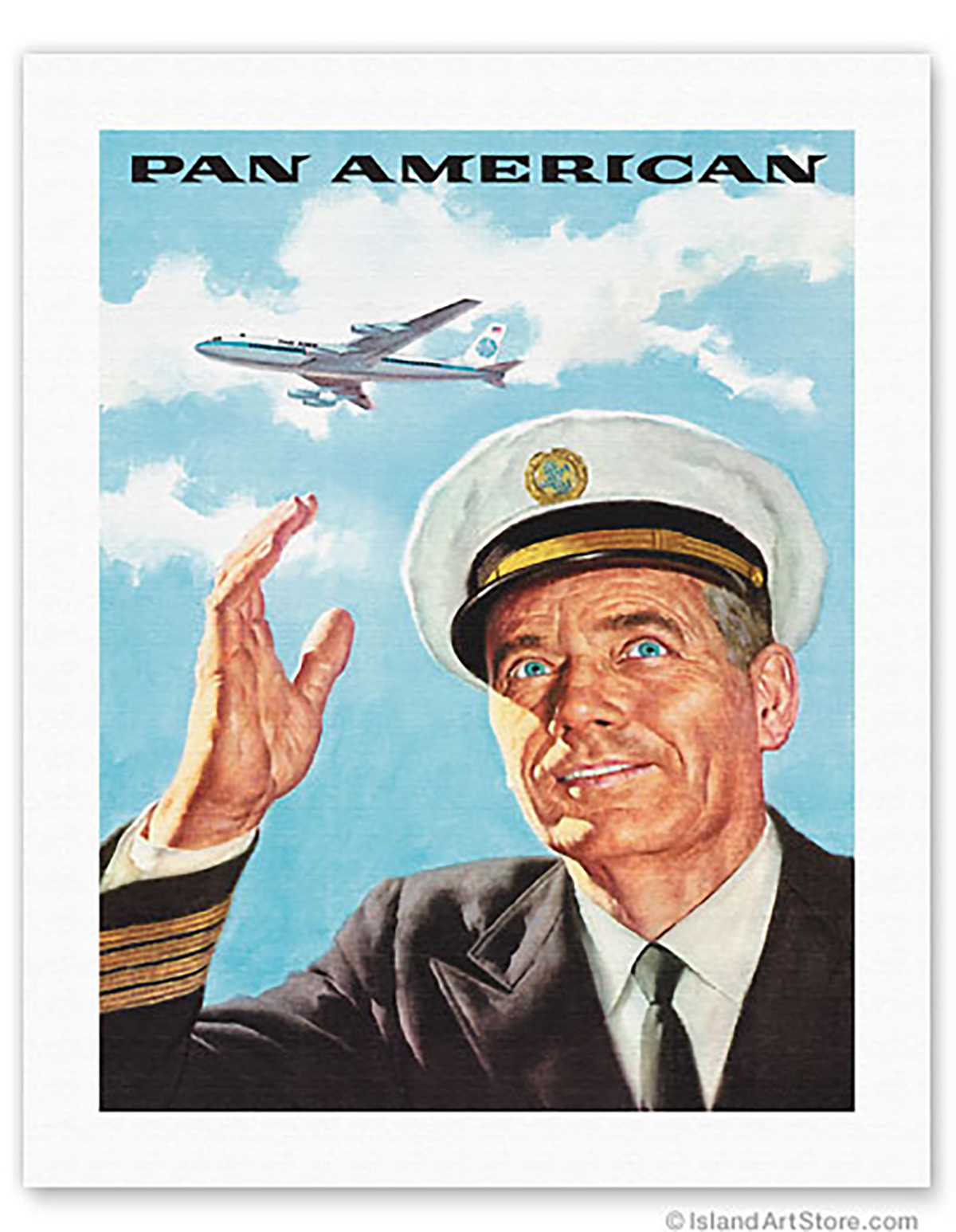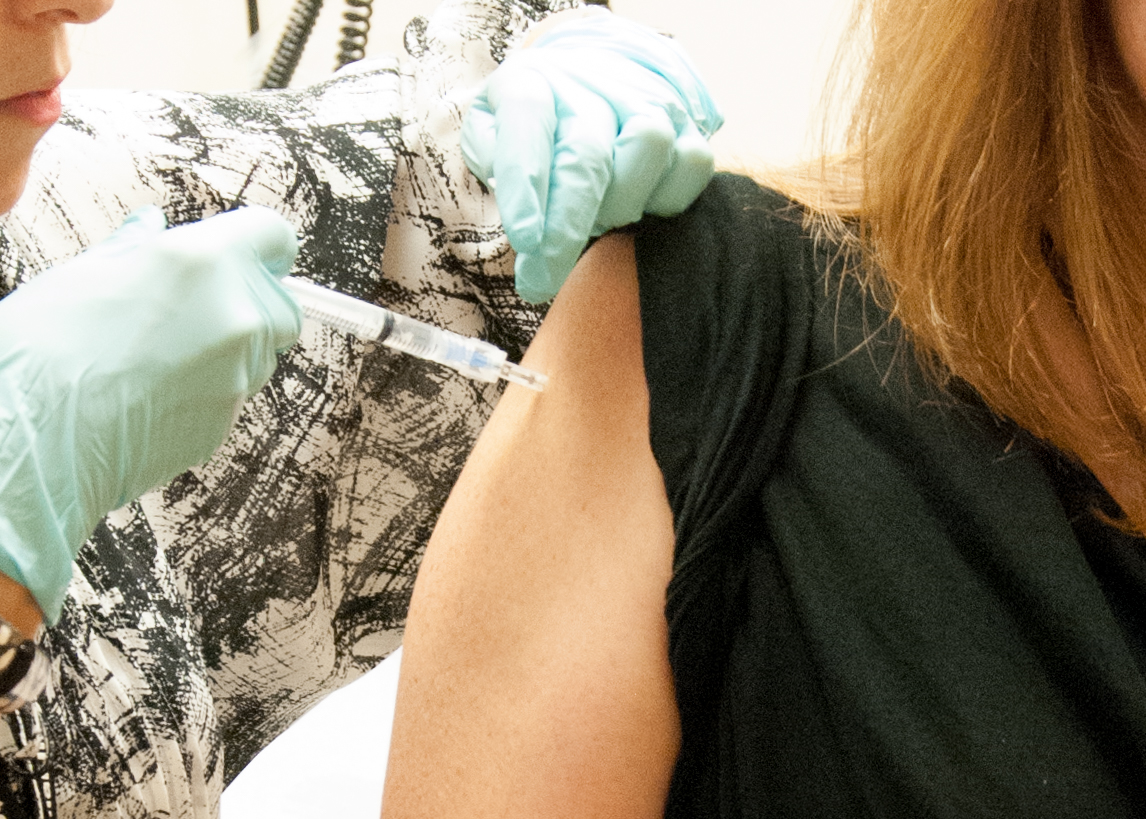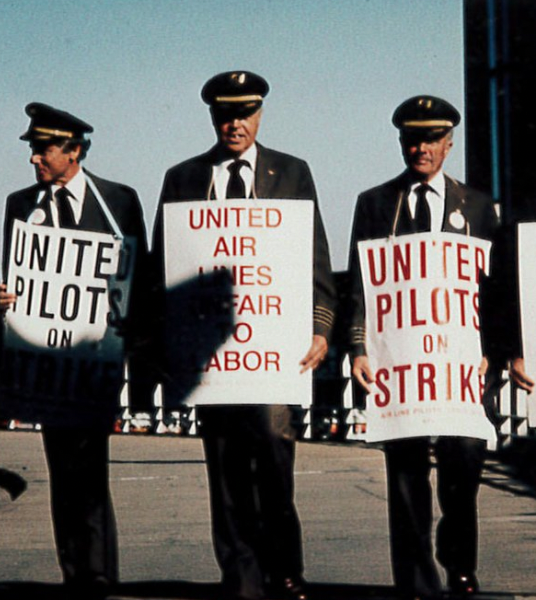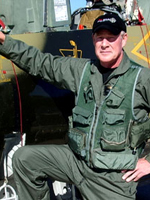As we’ve seen in our previous chapter, “Compartmentalization and a Focus on Flight,” it is vitally important for us aviators to learn how to place all that we do in aviation into a compartment that can be somehow isolated from the rest of our life. Doing so will help us to prevent distractions from corrupting what we do while flying or accomplishing other aviation related activities.
— James Albright

Updated:
2022-01-15
But this is easier said than done for most of us, since most of our time is spent away from aviation. We know that family needs and work demands can have negative impacts on our focus on flight. But there is something that gets in the way even before those external factors and that is the social pressure we place on ourselves. For this chapter, we’ll examine how those inner demons can impact our performance as aviators and ways to prevent this clash of demands for our attention. But before we do that, we need to take a deeper look “inside.”
1 — Society's view and a pilot's ego
2 — Pressure point one: aspiring to be more (or wishful thinking)
3 — Pressure point two: perfect versus good
4 — Pressure point three: politics and other taboos
5 — Pressure point four: money and status
6 — Improving the flight versus social compartment relationship

1
Society's view and a pilot's ego
There is no doubt that the public’s view of the typical airline captain back in the heyday of commercial aviation was a good one. The pilot had skills that mere mortals could only dream of. The image of an airline captain with four stripes on each sleeve instilled confidence in all those sitting in back. Even after the expansion of commercial aviation and the number of airline pilots, the public still has a positive view of the profession. Pilots have a skill few mortals can comprehend. “They must have nerves of steel to do all that magic that goes on behind the locked cockpit door!”
As aviators we know better. But our public persona serves to feed our egos. Whether we admit it or not, the fact we bear the title pilot influences our career decisions and our willingness to put up with the long hours of study, the odd schedules, the long duty days, the short layovers, and all the other things we know make this less than an ideal way to make a living.
With rare exceptions, the road to becoming a professional aviator begins in what may seem like poverty. Going through the civilian flight instructor route might start off at less than a minimum wage. Those going through the military ranks are saddled with even longer hours, a commitment to Uncle Sam that can last as many as ten years, and in some cases the dangers of combat. But still we crack on, building hours and experience, one day hoping to be making the big bucks flying heavy iron. Another thing we are building along the way is a kinship with our peers. We become a part of a fellowship of aviators.
The society of professional pilots is a close-knit group. We speak our own language that few on the outside really understand. Many outsiders look up to us and we know that. It is a rare ego-less pilot who can survive the initiation into the group without developing an ego worthy of pop music. (“You’re so vain, you probably think this song is about you.”) Real or not, this perceived public adoration places a subconscious pressure on pilots to live up to the hype.
2
Pressure point one: aspiring to be more (or wishful thinking)
Some think of pilot progression as steps on a ladder. Or maybe climbing a pyramid. In either case, we are implying that there are pilots, and then, there are pilots! We want to be one of the latter! I have a friend who grew up flying a Citabria who aspired to become a business jet pilot and after years of hard work found his dream job flying a very old GIV in a day when the G550 was the flagship in the Gulfstream world. His company recently put in an order for a G700 and he will soon be flying it, even as he dreams of the G800. I know a few Gulfstream test pilots typed in the latest and greatest that company has to offer; and they dream of being astronauts. And, finally, I know an astronaut who dreams of flying a Citabria.
These kinds of hopes and aspirations are healthy, of course, and serve to motivate us forward. But our dreams can be distracting and even harmful if they infiltrate our flight compartment and impact the way we fly. Social media is filled with evidence of pilots acting out their inner fighter pilot fantasies, while endangering the public. In just the last few years:
- A Falcon 900 executing a high speed fly-by at what appeared to be less than 100 feet, followed by a steep bank angle turn and low altitude fly by. The video replays the even from the cockpit, showing the pilot turning to the camera with a smile as aural alert warns, “Too Low Terrain” followed by “Bank angle, Bank angle.”
- A Gulfstream G550 on approach with a passenger standing behind the pilot while the two engage in conversation. Then, as the EGPWS aural advisory “Minimums” comes on, the smiling pilot reaches out for the camera, placed on the copilot’s side, to aim it away from him and towards the runway to record the landing.
- A Falcon 900 taking off and leveling off at approximately 20 feet over the runway with the gear already retracted. As it accelerates it flies within feet of people standing at the beach on the opposite end of the runway.
- A Cessna Citation doing an aileron roll, shown from a video camera in the cockpit, ending with stick shaker activation and the pilot’s frantic efforts to regain control.
- An Astra Jet taking off and accelerating in level flight very close to the ground, the flap overspeed aural warning, a few expletives, an aggressive pitch up, a 90-degree bank causing the nose to drop, and an aileron roll. All of this as the two pilots are heard laughing.
In many of these examples the pilots seemed just as oblivious to the dangers to themselves and the public, as they were to the dangers to their careers when evidence of their reckless behavior went “viral.” The pressure to live one’s dreams can drive pilots to careless and reckless behavior. Pilots on the opposite side of this spectrum are also subject to social pressures, but their motivations can be seen as laudable.
3
Pressure point two: perfect versus good
“Who’s the best pilot you ever saw?” If you’ve seen the movie, “The Right Stuff,” you know the answer: “You’re looking at him.” When the movie came out in 1983, I had two distinct advantages in the ego department. First, I had already read the Tom Wolfe book and expected the bravado. Second, I graduated from Air Force pilot training four years earlier. (If that experience doesn’t humble you, nothing will.) Regardless of where you stand on the “who’s the best pilot you ever saw” question, you know what perfection looks like. And you know it cannot be reached.
Or do you? Part of the pilot persona is an overwhelming inner self confidence that promotes successes and overlooks any efforts that fall short. On the one hand: “That landing was so smooth, I had to call tower to confirm we had landed!” But on the other: “There must have been some unreported windshear today!”
A few years ago, I was asked by a pilot new to heavy iron for help with crosswind landings. He was the junior pilot in a fifteen-pilot flight department that had transitioned from the Citation V to the Gulfstream G650. The story from the senior pilots was the larger aircraft was a dream to fly and posed no stick and rudder challenges. He tended to agree until his first crosswind landing in the big bird. He struggled with it and assumed he was the only G650 pilot in history who had this difficulty. His fellow pilots were of little help. “You’ll get it someday.” He began to dread flying on windy days. After a year of this, he realized that every pilot in his flight department was facing the same struggle and were wondering if their new jet was a lemon. That’s when he called me.
The Citation V has a wingspan of 52 feet, and he landed it like every other airplane in his logbook at the time: he would set up a “wing low” sideslip prior to every landing. In the G650, with nearly twice the span, the preferred method is to approach the flare in a crab before aligning the aircraft with the runway, something called a de-crab but many pilots call it “kicking out the crab.” More about this technique: Crosswind Landing.
I counseled him to try this technique in the simulator until it felt natural and then the airplane. And that solved his problem. The pilots in his flight department were amazed and all joined in with the new technique. The entire flight department fell in love again with the new aircraft.
4
Pressure point three: politics and other taboos
I was flying late at night on November 7, 2000, minding the radios and listening to the other pilot and flight attendant get rather animated about the Presidential election. The mood had turned frosty and I could tell the pilot was agitated. He kept looking to me for support but I kept my thoughts to myself. Someone on the radio announced that Vice President Al Gore had conceded — this was before he "unconceded" later that night — and the pilot's mood improved considerably.
I was a passenger on a Delta Airlines flight last year when, before the boarding ramp was retracted, the captain announced that anyone who didn't want to wear a mask was invited to leave his airplane because he wasn't going to fly anyone who would endanger the lives on anyone in his airplane. Judging by what I saw from my seat, I think half the passengers on his airplane agreed with him and the other half decided to keep quiet. My only concern was about his first officer and if they were on the same page on the subject. All of this was a few months before the CEO of his airline admitted that wearing masks on the company's airplanes was pointless because of the HEPA filters and the air exchange rate.
5
Pressure point four: money and status
Does money motivate you? Or, put another way, does the lack of money motivate you? In the Air Force, our salaries were set in stone much lower than our civilian counterparts and many of us tended to be motivated out of uniform. While I lasted twenty years, I think at least half my peers made the jump before the five-year point, back when that was allowed. Few business jet pilots are unionized and are often motivated to shop for greener pastures. In my current flight department, I had one pilot quit a few months after we paid for his training, in search of a higher paycheck. The airlines, of course, are known for unionized work actions but we, the traveling public, are assured these troubles never interfere with what goes on in the cockpit. I learned early on this isn’t always true.
In 1986, the U.S. Air Force decided I needed to be a Boeing 747 pilot, so I was sent to the United Airlines Denver Stapleton Airport training center. I was 30 years old and wanted desperately to fit in, so I booked myself into the crew hotel and got a cab to the training center for the first day of class. After a long first day, I joined my fellow students, all of whom were airline pilots, in line for the crew bus back to the hotel. We were all in civilian clothes and the mood was light. The crew bus arrived filled with United crews in uniform, having first stopped at the terminal. My fellow classmates boarded the bus, and each were greeted warmly. As I boarded, every seated pilot made eye contact and frowned. Then I heard the first clacker, from a child’s toy. I recognized the sound from an old World War II D-Day movie. Soon the bus was filled with sounds of the clacker, even as the bus made its way to the hotel. My plans to fit in had failed, and I had no idea why.
“Why are you all singling me out like that,” I asked the nearest captain.
“You know why, scab,” he said.
“I don’t know what you are talking about,” I said. “I am an Air Force pilot, and we are paying United to train me to fly a 747, since we don’t have enough of them to have our own training.”
That changed everything and the captain invited me to dinner that night where I was treated to dinner and drinks. The captain explained that their ranks were filled with pilots who had crossed the picket lines from the previous year’s strike. “We will never forget.”
I asked the captain if he had flown with any of these pilots and he said he tried to avoid it, but every now and then he didn’t have a choice. I asked him if the animosity affected cockpit resource management, which was what we called CRM back then. He insisted that all mandatory callouts were made, and safety wasn’t compromised. But he also said the cockpit was completely silent otherwise. I said it wasn’t conducive to having both pilots work as a team. But he emphasized that the scab took money that threatened his livelihood and took food from the mouths of his children. He wasn’t going to be convinced otherwise.
His attitude seemed typical amongst many United pilots at the time. While most of the airline pilots that I’ve known over the years appear to be professional in every possible way, the subjects of pay, seniority, and work rules tend to trump all other considerations.
In 2009, a Northwest Airlines crew overshot their destination by 150 miles while the pilots were consumed in a discussion about their company’s newly released scheduling system. A year before that, I flew a Gulfstream GV charter from Rio de Janeiro, Brazil, to Paris, France for a fractional operator only to find out we would be shadowing one of their aircraft flying the same trip. We took ten of the twelve passengers because their pilots said they couldn’t take more than two passengers that distance. When I found out they were also flying a GV I asked why they “fudged” the numbers. They said they were pushing for new work rules and would continue to do the fuzzy math until the company agreed.
I am sure most pilots will tell you that worries about pay, work schedules, seniority, and other pressures do not intrude into the cockpit. But I’ve seen and lived more than a few examples that suggest otherwise. We are social creatures, and it is in our nature to be holistic: everything impacts everything else. As aviators, we must find a way to insulate aviation from everything else. The flight compartment deserves special care.
6
Improving the flight versus social compartment relationship
I’ve known many pilots over the years that seem to effortlessly switch on their pilot compartment when boarding their aircraft and remain in “pilot mode” until the flight was completed. But far more are like me, having to work to keep on task while the other compartments of their lives fought for attention. I’ve admired this trait, what some would call an ability to place emotional distance between their many personas but is really their skill at compartmentalization. The common point in their psyches are humility and gratitude, tempered by the realization that we are living in a snapshot in time. What you are doing today was but a dream for some not too long ago. And your dreams about tomorrow will eventually become nothing more than aviation history in the not too distant future.
In 1972 I was a high school student dreaming of becoming an Air Force pilot and maybe flying the hottest fighter jet of the day, the McDonnell Douglas F-4 Phantom II. That same year, Navy Lieutenant Pete Pettigrew, in a flight of two F-4s, engaged four North Vietnamese Mig-21 fighters in a 90-second dogfight. Pete shot one of the Migs out of the sky and his wingman got another. Thirty years later I was a retired Air Force Lieutenant Colonel and Pete was a retired Rear Admiral dreaming about flying Gulfstreams. That’s how we met and how I learned the secret to compartmentalizing any inner social demons that I may have. Pete talks about the precision of air-to-air combat maneuvering and flight discipline, not about any retina-detaching 9G turns. But he also realizes that his era of fighter combat is history, having given way to the video game era of airborne battle centers orchestrating air superiority before a single shot is fired. And perhaps all that will give way to unmanned aircraft where no pilots are involved at all.
But what if your inner demon has nothing to do with wanting the aircraft of the past or of the future? What if the thing that plagues you is the need to be better than you are? That is certainly an admirable trait and we aviators need to realize that ours is a collaborative skill. It is natural to sing out about our latest successes, but it is also natural to mute any talk about our failures. That not only encourages the idea that everyone else is perfect (and you aren’t), but it also robs every one of the chance to find solutions to seemingly unsolvable problems. Just as my friend’s flight department struggled with crosswind landings until he sung out about his problem, the solution to any problems you might be experiencing may lie with the pilot seated right next to you.
I learned from years of flying with members of the U.S. government that it does no good to discuss politics. You aren't going to convince them and they aren't going to convince you. I think this is a lesson most professional crews understand. The current situation with vaccine mandates and masks seems to have blurred the line between what should and should not be open for discussion. I have been vaccinated but don't push that view on others. I don't wear a mask unless I have to. If someone asks me why not, I'll say, "I will be happy to wear a mask if it makes you more comfortable." I am also happiest when everyone connected with aviation keeps a focus on aviation.
The final pressure, the pressure from money and status, can be the most vexing of all. When your neighbor has a nicer car, a pool in the backyard, and brags about their latest annual vacation, it is only natural to worry that you aren’t making enough to keep up with the proverbial Joneses. When your buddy from flight school becomes a wide body captain at a major airline while you have to start over again after your last company went bankrupt, putting on the three stripes of a first officer can be a bitter pill to swallow. After a lifetime of this, I found that the age-old advice of living within your means and having a rainy-day fund is true. But I had the opportunity to learn this much earlier.
When I reported for duty at Loring Air Force Base, Maine in 1980, I was a 23-year old second lieutenant earning $827.40 a month, plus a very cool $100.00 every month in flight pay. Our crew navigator, a crusty 28-year old captain, advised me to take each month’s flight pay and save it. “Treat it like you never got it. Twenty years from now, when you retire from the Air Force, you’ll have enough to buy a house with cash.” Of course, I didn’t do that. Twenty years later when I left the Air Force, I bought a house with barely enough cash to make the minimum down payment.
In the twenty years since, I’ve tried to live well within our means and ignored my peers with their Teslas, backyard swimming pools, and vacation homes. I’m not sure how they paid for all that, but I am about to retire a second time. We are paying for our retirement home with cash. And that is my advice on this subject. Don’t worry about what the other guy is making or spending. Control your finance compartment so you don’t have to worry about it at all. That will reduce any worries about status and all of that will allow your flight compartment to remain uncorrupted.






